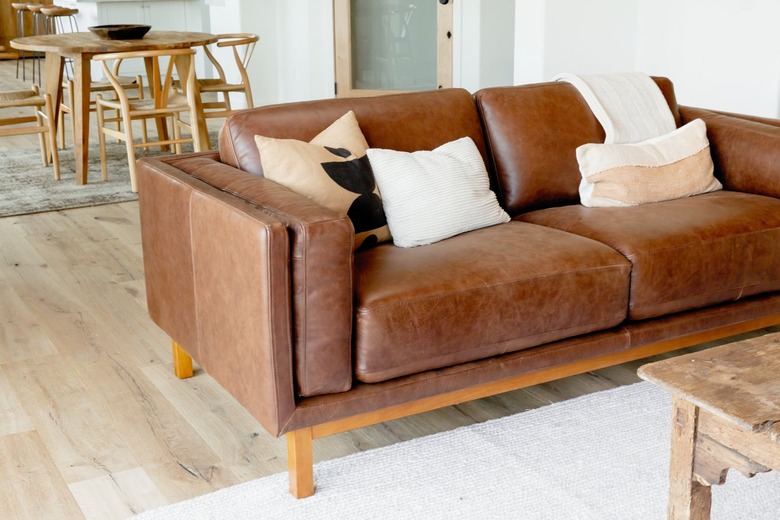How Bad Is It To Work From Your Couch?
After a year and a half of working from home — or longer, for those of us who have been doing it for years prior — many of us are starting to feel the change. And it's not just the loss of in-person socializing or the Zoom fatigue. Rather, those of us working from our beds or couches are starting to feel the brunt of those uncomfortable seating positions. Hello, increasing back pain.
"Working on the couch will often lead to a slouched posture that includes an anterior tilt of the pelvis, an increased lordosis (hunch) of the mid back and the forward movement of the neck (tech neck)," Dr. Shelby Simon, a New York certified wellness chiropractor, tells Hunker. "This misalignment of the posture will create a lot of compensation in the body and lead to possible tight and sore muscles and even disease in the organs."
You can limit a bit of discomfort by maintaining a healthy seated position — feet on the floor, your laptop on a table (or at least on a pillow for some height so you aren't staring down into your lap), and spine straight. But couches can only support us for so long.
Even the most strict WFH person might find themselves with their legs tucked underneath them, or their body sinking into that soft spot in the couch. You might find yourself re-thinking that super sleek low sofa, or that soft, velvet couch you just had to buy. It probably doesn't have the support the body needs. Hence the endless stream of back pain and discomfort.
"I would absolutely recommend anyone who is already doing their best with ergonomics at home to visit a local chiropractor to get their posture and spinal alignment checked," Dr. Simon says. "This will help make sure that they are correcting anything that may have already misaligned but also help to prevent problems in the future."
Your best bet is creating an environment that takes your body and health into account — not just physically but also mentally.
"For a lot folks, having a dedicated workspace can create the separation they need between their working and living space," Torin Rittenberg, head of growth at office furniture company Branch, tells Hunker. "Note that this is not necessarily about creating 'work-life balance,' but rather a physical balance between areas where you get most of your work done, and areas where you can unwind and recalibrate outside of working hours ... those periods of rejuvenation and downtime are incredibly important to your productivity — and it can be hard to get them if you're always working in the same space that you're doing all the activities you do to unwind in."
And if you just can't get yourself to give up working from the sofa, don't worry. Dr. Simon has a suggestion.
"For people who must work in small spaces at home, some absolutes are to always have both feet planted on the ground whether sitting or standing, making sure that the computer screen is at the level of the eyes, and that they take eye and body breaks to walk around every 30 minutes," she says.
Here's to taking care of our bodies as we continue to work from home.
